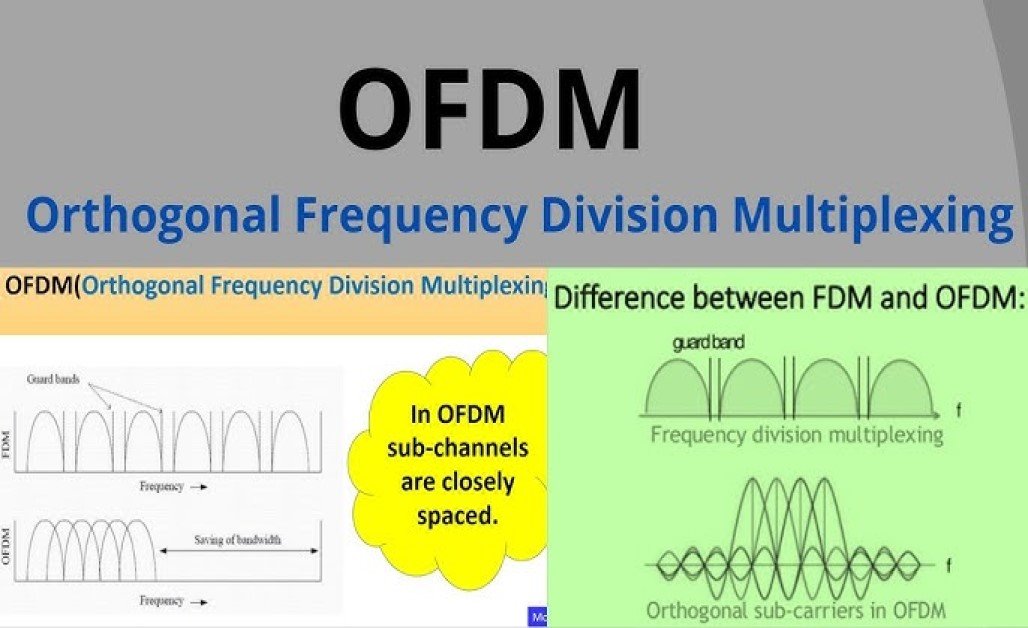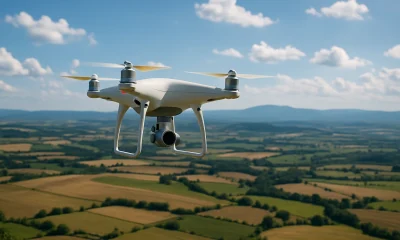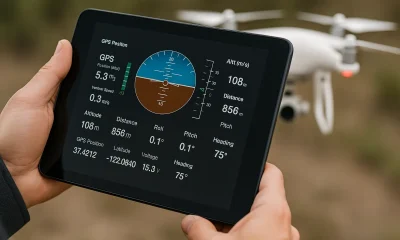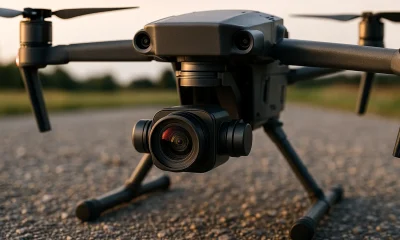- Acronym Guide
- AAM
- ABS
- AC
- ACAS
- ADS-B
- AEHF
- AFAC
- AGL
- AI
- AIM
- ALPA
- ALS
- AM
- AMA
- ANSP
- AOI
- APPI
- AUV
- AUVSI
- ARPAS-UK
- ASTM
- ATC
- ATO
- BLOS
- BVLOS
- CAA
- CAAC
- CAB
- CAP
- CASA
- CATT
- CBO
- CBR
- CBRN
- CDMA
- CDR
- CFI
- CFR
- CIR
- COA
- COMINT
- CORS
- COTP
- COTR
- CPTED
- CV
- C2
- DAA
- DAS
- DEM
- DFI
- DFS
- DGCA
- DHS
- DOD
- DPA
- DPEs
- DRG
- DRO
- DSM
- DSMX
- DSP
- DSSS
- DTM
- EASA
- EFT
- EO
- EOD
- EO/IR
- ELINT
- EMI
- ESC
- EVLOS
- eVTOLs
- FAA
- FCC
- FCS
- FHSS
- FICCI
- FLIR
- FOB
- FOV
- FPS
- FPV
- GBDAA
- GCP
- GCS
- GDPR
- GML
- GNSS
- GPS
- GSD
- GVC
- HDR
- HOGE
- IACRA
- ICAO
- ICS
- IMU
- INS
- IR
- ISA
- ISR
- ITU
- JARUS
- LAAMS
- LAANC
- LAATM
- LAI
- LAS
- LBA
- LIDAR
- LOS
- LSALT
- MAC
- MAVLink
- MLIT
- MMS
- MSL
- MTOM
- NDAA
- NCSL
- NFZ
- NIST
- NMEA
- NOTAM
- NPA
- NPRM
- NTIA
- OBIA
- OEM
- OFDM
- OGI
- OOP
- PAS
- PASM
- PAV
- PCV
- PdM
- PEC
- PIC
- PID
- PIPL
- PLD
- PM
- PN
- PPK
- PPS
- PSM
- PTZ
- PWM
- UAM
- UAOP
- UAS
- UASTM
- UAV
- UCAVs
- UHD
- UHF
- USV
- UTM
- RAIM
- RCC
- RCS
- RFI
- ReOC
- RePL
- RMS
- ROI
- RPAS
- RPC
- RTH
- RTN
- RTK
- SaR
- SAR
- SARP
- SBAS
- S.Bus
- SBIR
- SEDENA
- SfM
- SFOC
- SIGINT
- SLAM
- SMS
- SOP
- SORA
- STANAG
- STTR
- STK
- sUAS
- TCAS
- TCCA
- TFR
- TIN
- TLM
- TOF
- TP
- TPS
- TSA
- VHF
- VLOS
- VTOL
Drone Acronyms
What is OFDM (Orthogonal Frequency Division Multiplexing)?
By
Jacob StonerTable Of Contents

Definition
OFDM stands for Orthogonal Frequency Division Multiplexing, a digital transmission technique that divides a wide frequency band into multiple subcarriers, each transmitting a portion of the data simultaneously. These subcarriers are orthogonal, meaning they do not interfere with each other, allowing for efficient use of bandwidth. OFDM is widely used in modern communication systems, including Wi-Fi, 4G/5G, digital television broadcasting, and some drone communication systems, to achieve high data rates and resistance to interference.
Usage
In drone applications, OFDM is used to transmit control signals and telemetry data between the drone and the ground control station. It is particularly effective in maintaining reliable communication in environments with high interference or obstacles that could disrupt signals. OFDM’s ability to transmit data over multiple subcarriers enhances its resistance to signal degradation caused by multipath interference, a common issue in urban or densely populated areas.
Relevance to the Industry
OFDM’s high data throughput and efficient use of spectrum make it an ideal solution for drones that require robust and high-bandwidth communication, such as those used for video streaming, remote sensing, or industrial inspections. Its resistance to interference ensures stable communication, even in environments with significant radiofrequency noise. Many modern drone systems, particularly those used for commercial and industrial applications, rely on OFDM for secure and reliable communication.
How Does Orthogonal Frequency Division Multiplexing (OFDM) Work?
Subcarrier Division and Orthogonality:
- Dividing Data into Subcarriers:
- Multi-Channel Transmission: OFDM works by splitting the data stream into multiple smaller sub-streams, each transmitted simultaneously over a different subcarrier frequency. These subcarriers are closely spaced within the same frequency band, but they remain orthogonal, meaning that they do not interfere with one another despite their proximity. This allows for efficient use of the available bandwidth, with minimal interference between subcarriers.
- Parallel Data Transmission: Each subcarrier transmits a portion of the overall data in parallel. By spreading the data across many subcarriers, OFDM improves data throughput and makes the system more resistant to interference, as the impact of noise or signal fading on a single subcarrier is minimized.
- Orthogonality and Spectral Efficiency:
- Orthogonal Signal Design: The key to OFDM’s efficiency is the orthogonality of the subcarriers. Orthogonality means that the peak of one subcarrier’s signal occurs at points where the other subcarriers have zero amplitude, preventing interference. This allows for tight packing of subcarriers in the frequency domain, increasing spectral efficiency compared to traditional frequency division multiplexing (FDM), where spacing is required to avoid overlap.
- Spectral Overlap Without Interference: In OFDM, the subcarriers overlap in the frequency domain, but due to their orthogonal nature, they do not interfere with each other. This overlap reduces the need for wide frequency bands, making OFDM more bandwidth-efficient while still supporting high data rates.
Modulation and Signal Transmission:
- Modulating Subcarriers:
- Digital Modulation: Each subcarrier in an OFDM system is modulated using digital modulation techniques like Quadrature Amplitude Modulation (QAM) or Phase Shift Keying (PSK). The choice of modulation depends on the desired balance between data rate and robustness. Higher-order QAM (such as 64-QAM or 256-QAM) allows for higher data rates, while lower-order modulation is more resistant to noise.
- Frequency Domain to Time Domain Conversion: Once the subcarriers are modulated, an Inverse Fast Fourier Transform (IFFT) is applied to convert the signal from the frequency domain to the time domain, enabling parallel transmission of the modulated data. This process ensures that the data from all subcarriers can be transmitted simultaneously as a composite signal.
- Cyclic Prefix for Multipath Resistance:
- Handling Multipath Interference: In wireless communication, signals can reflect off surfaces, causing multipath interference. To mitigate this, OFDM systems use a cyclic prefix, which is a copy of the end of the OFDM symbol that is inserted at the beginning of the symbol. The cyclic prefix helps preserve orthogonality by reducing the effects of time delays between the direct signal and reflected signals, improving resistance to multipath fading.
- Guard Interval: The cyclic prefix also serves as a guard interval, which helps prevent inter-symbol interference (ISI) by ensuring that the delayed signals from one symbol do not overlap with the next symbol.
Applications and Benefits of OFDM:
- Efficient Use of Bandwidth:
- Maximizing Data Throughput: By using multiple subcarriers in parallel, OFDM can transmit high volumes of data over the same frequency range. This makes it ideal for applications like Wi-Fi (802.11 standards), 4G LTE, and 5G, where high-speed data transmission is essential. For drones, OFDM’s efficient use of bandwidth allows for real-time video transmission, telemetry, and control signals even in environments with limited spectrum availability.
- Handling Interference: OFDM’s ability to spread data across multiple subcarriers improves its resistance to narrowband interference, as interference affecting one subcarrier has minimal impact on the overall transmission. This feature is particularly beneficial in environments with high RF noise, such as urban areas or crowded frequency bands.
- Handling Frequency-Selective Fading:
- Robust Against Fading: In wireless communication, certain frequencies may experience fading due to obstacles or interference. OFDM’s use of multiple subcarriers means that even if some subcarriers are affected by frequency-selective fading, others can still transmit data, preserving overall transmission quality. This makes OFDM highly reliable for drone operations, especially in environments with physical obstructions like buildings or trees.
Integration with Modern Communication Technologies:
- Widely Used in Modern Communication Systems:
- Wi-Fi and 4G/5G Networks: OFDM forms the backbone of Wi-Fi (802.11a/g/n/ac/ax), 4G LTE, and 5G communication standards, enabling high-speed, low-latency connections in both consumer and industrial applications. Drones equipped with OFDM-based communication systems benefit from the technology’s ability to handle large data streams, such as high-definition video, while maintaining a stable link even in challenging environments.
- Drone Communication: OFDM’s resilience and efficiency make it an ideal choice for drone communication systems that require high data throughput and stable connections over long distances. By minimizing interference and efficiently using bandwidth, OFDM enables secure and reliable control of drones, even in crowded airspace or environments with significant signal reflections.
By dividing data into multiple subcarriers, OFDM enables efficient and high-speed communication, making it ideal for a range of applications, from Wi-Fi and 5G networks to drone control and telemetry systems. Its ability to handle interference, multipath fading, and bandwidth constraints makes it a key technology in modern communication systems.
Example in Use
“The drone’s communication system uses OFDM to ensure stable video streaming, even in environments with high interference from other wireless devices.”
Frequently Asked Questions about OFDM (Orthogonal Frequency Division Multiplexing)
1. How does OFDM work?
Answer: OFDM works by:
- Dividing the Signal: It splits the data into multiple subcarriers that are transmitted simultaneously over different frequencies. Each subcarrier carries a portion of the data, reducing the impact of interference on any single carrier.
- Orthogonality: The subcarriers are orthogonal to each other, meaning they do not interfere, allowing for efficient use of bandwidth.
2. What are the advantages of OFDM?
Answer: OFDM offers several advantages, including:
- High Data Rates: By using multiple subcarriers, OFDM can transmit large amounts of data simultaneously, supporting high-speed communication.
- Interference Resistance: OFDM is highly resistant to interference, especially in environments where signals may be disrupted by obstacles or other wireless devices.
3. Where is OFDM commonly used?
Answer: OFDM is widely used in:
- Wireless Communication Systems: It forms the basis for Wi-Fi (802.11a/g/n/ac), 4G LTE, and 5G.
- Broadcasting: OFDM is used in digital TV standards like DVB-T and digital audio broadcasting (DAB).
- Drone Communication Systems: Many advanced drones utilize OFDM for high-speed, interference-resistant communication.
For examples of these acronyms visit our Industries page.
As the CEO of Flyeye.io, Jacob Stoner spearheads the company's operations with his extensive expertise in the drone industry. He is a licensed commercial drone operator in Canada, where he frequently conducts drone inspections. Jacob is a highly respected figure within his local drone community, where he indulges his passion for videography during his leisure time. Above all, Jacob's keen interest lies in the potential societal impact of drone technology advancements.
Pros
Cons
You may like


What is BLOS (Beyond Line of Sight) & How Does it Work?


What is ATO (Authority to Operate) & How Does it Work?


What is ALPA (Air Line Pilots Association) & How Does it Work?


What is AEHF (Advanced Extremely High Frequency)?


What is TLM (Telemetry) & How Does it Work?


What is PTZ (Pan-Tilt-Zoom) & How Does it Work?